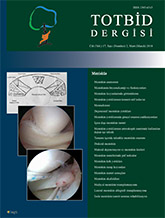
Advances in the understanding of the biomechanical role of the menisci and repair techniques have led to an increased effort to preserve the menisci. The best results of meniscal repair are obtained in traumatic vertical longitudinal tears in the vascular zone in younger patients. It has been shown that healed menisci can protect the knee from osteoarthritic changes. Meniscal repairs accompanying anterior cruciate ligament (ACL) injuries have up to 90% healing rates. Isolated meniscal repairs have slightly inferior outcomes. Developments in surgical technique and instrumentation have led to expanded indications for meniscal repair including horizontal, radial and root tears of the menisci. Repair of the degenerative medial meniscal root tears is important to prevent rapid progression of osteoarthritis. Repair of the lateral meniscal root tears accompanying ACL tears contributes to the decrease of pivot-shift phenomena. If malalignment of the extremity or ligamentous laxity accompanies a meniscal tear, both should be corrected with combined interventions. Clinical examination and standard magnetic resonance imaging (MRI) does not provide adequate information to evaluate the healing of meniscal repairs; second look arthroscopy or arthro-MRI can improve accuracy.